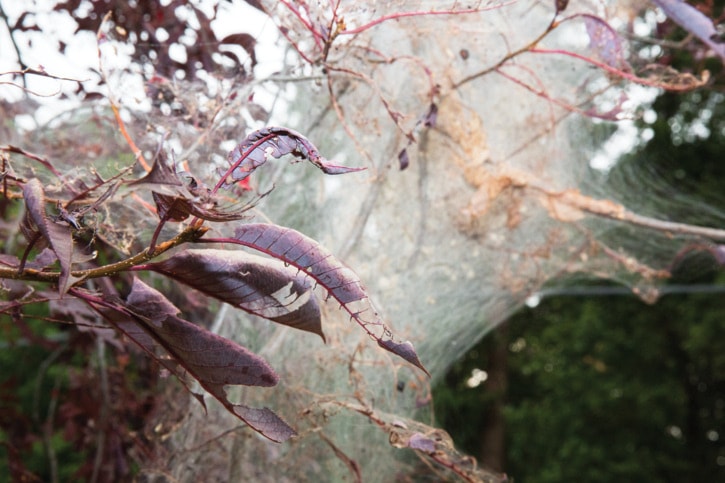They certainly live up to their name.
Ugly nest caterpillars are in abundance in Salmon Arm this year.
Harriet Hanna, co-owner of Hanna and Hanna Orchards, says tent caterpillars are also an issue this year.
“The ugly nest caterpillar is yellow and the western tent caterpillar is grey with blue dots, but the damage they do is virtually the same,” says Hanna, noting the caterpillars don’t kill the trees but they can strip them bare of leaves. “The leaves are the food factories for the trees.”
The ugly nest caterpillars like to feed on trees that are a member of the prunus family – all the choke cherries and ornamental Schubert chokecherries that are lining some Salmon Arm streets are especially susceptible to being taken over by the caterpillars.
“I am not recommending those trees to people because they are such a problem,” she says. “I hate selling something that will get this.”
Hanna says some fruit trees are also affected, including cherries, apricots, peaches – all members of the same prunus family.
“I know they all have cyanide in the leaves, but I don’t know if that’s what they like.”
Getting the ugly residents out of trees can be difficult.
“The problem with any organic control is that the tents really protect the little critters,” she says noting the contact sprays or a treatment they ingest are the only effective controls. “The best thing I can recommend is cut them out. If we didn’t have fire issues, the standard procedure would then be to burn them.”
Instead of fire, Hanna suggests putting the branches out on the side of the road and mushing all the caterpillars or put them in a plastic bag, then close it and put the bag out in the sun.
Hanna also suggests that when fall comes, people look carefully at the trees to see if they can spot the egg masses that will over-winter if the weather is as mild as forecasters believe it will be, thanks to an El Nino.
A tree care site on the Internet recommends avoiding chemical sprays which may kill or injure beneficial insects that may be feeding on the caterpillars.
The control Btk (Bacillus thuringiensis ‘Kurstaki’) is a bacterial pesticide that infects and kills only caterpillars, so it could be used to suppress unusually large infestations.
“Break open web nests of tent and ugly nest caterpillars with a rake to allow wasps and birds to feast on the occupants,” advises the site.
The ugly nest caterpillars usually appear on a three- to five-year cycle.
“What usually happens is there will be a disease… Then they go into decline,” says Hanna, noting another possibility is to cover the tree with dormant spray as late as possible but before the leaves sprout. “I know people have basically given up but, if we don’t have some disease, next year could be the same.”
